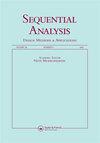成本约束下渐进I型截尾恒应力和阶跃应力加速寿命试验的比较
IF 0.6
4区 数学
Q4 STATISTICS & PROBABILITY
Sequential Analysis-Design Methods and Applications
Pub Date : 2021-01-15
DOI:10.1080/07474946.2021.1847940
引用次数: 9
摘要
摘要加速寿命试验是在高应力条件下对产品进行试验,并利用回归模型推导出产品在正常应力条件下的寿命。本文将最优k级恒应力和阶跃应力加速寿命试验与渐进式I型截尾下的瑞利破坏数据进行了比较。目标是量化使用阶梯压力测试相对于恒定压力测试的优势。由于实际资源有限,在设计阶段必须仔细确定应力持续时间,以便有效地进行加速寿命试验。应力持续时间直接影响实验成本和感兴趣参数的估计精度。本文在实验总成本不超过预算的约束下,研究了基于T/C/D/P/R几个最优准则的最优应力持续时间。此外,将这些标准放在一起进行比较。在预算约束下,对两种应力加载方案进行了比较。数值结果表明,成本约束降低了试验的成本和时间。结果表明,在两种应力荷载下,t型优化设计具有最低的无约束试验成本和时间。最后,为了说明问题,分析了一个真实的数据集。本文章由计算机程序翻译,如有差异,请以英文原文为准。
Comparison between constant-stress and step-stress accelerated life tests under a cost constraint for progressive type I censoring
Abstract In accelerated life testing, the products are tested under high stress conditions and the results are used to draw inferences about the product lifetime under the normal stress condition using a regression model. In this article, optimal k-level constant-stress and step-stress accelerated life tests are compared to the Rayleigh failure data under progressive Type I censoring. The objective is to quantify the advantage of using step-stress testing relative to constant-stress testing. Due to constrained resources in practice, stress durations must be determined carefully at the design stage to run an accelerated life test efficiently. The stress durations directly affect the experimental cost and the estimate precision of the parameters of interest. This article investigates the optimal stress durations based on several (T/C/D/P/R) optimality criteria under the constraint that the total experimental cost does not exceed a prespecified budget. In addition, these criteria are compared together. Under the budget constraint, these two stress loading schemes are compared. Based on the numerical results, the cost constraint reduces cost and time of the test. It is found that the T-optimal design has the lowest cost and time for the unconstrained testing in both stress loading. Finally, a real data set is analyzed for illustrative purposes.
求助全文
通过发布文献求助,成功后即可免费获取论文全文。
去求助
来源期刊

Sequential Analysis-Design Methods and Applications
STATISTICS & PROBABILITY-
CiteScore
1.40
自引率
12.50%
发文量
20
期刊介绍:
The purpose of Sequential Analysis is to contribute to theoretical and applied aspects of sequential methodologies in all areas of statistical science. Published papers highlight the development of new and important sequential approaches.
Interdisciplinary articles that emphasize the methodology of practical value to applied researchers and statistical consultants are highly encouraged. Papers that cover contemporary areas of applications including animal abundance, bioequivalence, communication science, computer simulations, data mining, directional data, disease mapping, environmental sampling, genome, imaging, microarrays, networking, parallel processing, pest management, sonar detection, spatial statistics, tracking, and engineering are deemed especially important. Of particular value are expository review articles that critically synthesize broad-based statistical issues. Papers on case-studies are also considered. All papers are refereed.
 求助内容:
求助内容: 应助结果提醒方式:
应助结果提醒方式:


